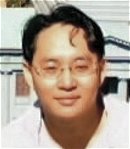|
Plenary
Lecture
Science for Life or Live for Science, Take the RFID
System and e-Learning for Example

Assistant Professor Ming-Shen Jian
Dept. of Computer Science and Information
Engineering
National Formosa University
Yunlin County, Taiwan
E-mail:
mingshen@edith.cse.nsysu.edu.tw
Abstract: Today, many researcher and scholars
propose various algorithms, theories, and systems via
proposals, papers, and presentations. Every year, there
are more than thousands papers proposed in different
conferences or journals. In addition, there are many
graduates from universities and research institute.
However, how many algorithms or systems are realistic or
realized is an interesting question. In the world, many
companies claim that their products or technologies come
from human nature. In fact, there are huge differences
between the technologies proposed and implemented. It
also makes the graduates work on the job with less
relation to the researches they did.
Due to the location, culture, and behavior habits, the
researches implemented in the laboratory may not be
suitable for people or satisfy the requirements at the
specific location. To enhance the feasibility of the
research or algorithms, considering the distance between
laboratory and reality is important. Sometimes,
researchers or students implement the technologies just
because that they suppose to. In fact, the end users or
general users of the technologies services should be the
most important targets that the researchers have to take
into account. In other words, how to encourage people to
adopt the technologies or make people interest in these
technologies is important. An acceptable or interesting
technology may have the chance to be realizable or
implemented by business model.
The RFID system today is general. However, even there
are many researchers who proposed their ideas or papers,
the technologies implemented around us are only a few.
Some researches present that the RFID system can achieve
some functions and capabilities. Most RFID systems until
now still work as the identification key of the guard
systems or monitoring applications. Some new RFID
applications work as one method or type of payment such
as metropolitan rapid transportation card. The ideas in
the laboratory may be good and efficient but are not
realized or accepted in the life. In other words, some
or more conditions and limitations such as the cost, the
behavior, the procedure, even the demand of these ideas
should be carefully considered.
Another famous application: e-learning has been
considered and implemented for a long time. Most
researchers in this area know or completely understand
one of the standards: SCORM. It is a procedure or
standard process for an engineer to implement a
e-learning material or system. Many papers,
applications, or systems are proposed and realized.
However, the e-learning system which is really
interesting for students or is are based on the content,
even there are many researchers who propose the possible
and new structure or applications year by year.
Researchers and engineers pay too much attention to the
technologies themselves than to take the users or
students into account. In other words, the proposed
systems or applications may force the people to conform
to the systems. It means that the users just can follow
the technical procedure made by the engineer even they
are not technical staffs.
Engineers or researchers provide the new and better
technologies or systems to general users. The more
important issue is: "Are these technologies, algorithms,
and applications needed by users?" In addition, some
questions about science should be also considered: 1) Is
it provided to improve the life and to be completely
better than the original function or application,
sometimes even can instead of the original one, 2) Does
it provide another choice or function for users dealing
with the original application, or 3) Does it encourage
users changing their original habits or suiting the new
technology? To make the science or technology useful and
beneficial for users, "User" should be the most
important factor.
Brief Biography of the Speaker:
Ming-Shen Jian is an assistant professor at the Dept. of
Computer Science and Information Engineering of the
National Formosa University in Yunlin County, Taiwan
from 2009. He received the Ph.D. degree in Computer
Science and Engineering of the National Sun Yet-Sen
University in Kaohsiung City, Taiwan, in 2007. He got
his B.S. degree in Electronic and Control Engineering of
the National Chiao Tung University in Hsinchu City,
Taiwan, in 2000.
He was the consultant of the International Semiconductor
Technology Ltd. and International Megatrend Smart
Technology Ltd. (2007~2008) and an assistant professor
at the Dept. of Computer Science and Communication
Engineering in Shu Te University in Kaohsiung County,
Taiwan (2008). His current research interests are in the
area related to Integration of RFID system, e-learning
and game for learning, and cloud computing.
|
